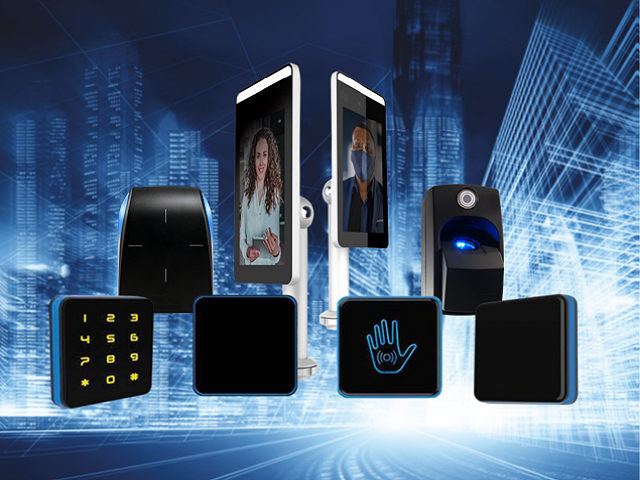Mobile Credential & Facial Recognition Camera Readers
30 March 2021

Electronic access control systems secure a building and help to protect the people and assets within from unwanted intrusions and theft. At the heart of an access control system is credential management. A credential is an authorised token, registered to an individual within an access control software managed database. When presented to a suitable reader, the credential is read and verified within a database and access or exit through a door way, turnstile or elevator is either granted or denied. The process is automatic and almost instantaneous.
Access control can be applied to any type of building and will consist of a software management platform, door access controllers and readers. There are several different types of reader and the most commonly used is an access card reader. This is a plastic card with a built-in microchip that is used to store electronic information, including a credential. The most widely used type of card is MIFARE due to its AES-128 encryption technology.
When the card is presented within the electromagnetic field of a card reader, the electronic circuit within the card is energised and the card data is accessed (presented) to the reader and checked to the database. Other information that can be included within the chip include cash deposits for use with a compatible vending machine. Here we are referring to traditional currencies (GBP in the UK) but one day, crypto-currencies could also be stored and carried.
Bluetooth Readers
Whilst access cards are one the of the most popular and traditional credential carriers, mobile phones present strong competition. Bluetooth card readers for access control applications are now available that allow authorised credentials to be stored on a mobile phone, and this data to be access at a door by a Bluetooth access control reader. A smart phone App holds the credential information, referred to as a ‘mobile credential’.
Mobile Phone Credentials
Mobile phone credentials provide ‘contactless’ secure door access. Their increasing popularity is driven partly by the wide use of mobile phones and during these pandemic types, the need to remove contact and social distance from potential virus sources. A plastic card can carry virus and bacteria and when presented to a traditional reader, contaminate both the card reader and subsequent cards that touch their surface.
Another advantage of mobile credentials is their ‘mobility’ i.e. the ease with which they can be issued to smart mobile phone users. A visitor to a site can be asked to download the smart phone App from the appropriate Store (Android or Apple) and then emailed their credential to apply to the App. As with a smart card, the credential can be time limited as well as area limited, allowing credentials to be sent to a visitor for a specific day and time. When the credential expires, it cannot be used with the system. The same applies with a credential provided on a plastic card but the card can be reused for another visitor and a new credential added.
Biometric Readers
Biometric type readers offer an alternative way to grant or deny access within an access control system. The term ‘biometrics’ refers to human characteristics that can be measured and calculated. In terms of access control biometric type readers are available for fingerprint, palm, iris and facial recognition.
Face Camera Terminals
This type of camera terminal or reader is contactless and has grown in popularity during the COVID-19 pandemic. The device uses facial recognition technology to check biometric information stored against a credential in a software platform. If the biometric data matches, the software instructs the door controller to allow access.
COVID-secure buildings can also make use of face camera terminals that can also check forehead/body temperatures. The software can be programmed for a safe temperature range. If the person who presents themselves to the reader has a fever and their temperature is above the safe range, credential approval is denied.
On-premise, Hybrid-Cloud and Cloud-based Access Control Software
Access control systems are designed to enhance site security and the majority of software installations today are on-premise. Hybrid-cloud applications are becoming more popular and the use of Bluetooth reader technologies and smart phone applications allows a combination approach with some of the software hosted on-premise and other aspects such as the issuing of Bluetooth credentials made available via a web interface.
Fully-cloud hosted access control software could in the future become more accepted but for this to happen, the access control system has to be designed for data centre cloud hosting from the start, rather than being a modified on-premise version. This approach allows the software to make use of software design features more suited to cloud-based applications including continuous deployment, containerisation and perhaps more importantly for a cloud-based application – cybersecurity. Most data centre web-hosting and colocation cloud providers only provide security up to the boundary of the deployed application. The final security layer, of the hosted website or application, is down to the client. In this case, the supplier of the access control platform.
